Clematis Piilu - a detailed description of the variety
In Estonia, after a long breeding work, the Piilu clematis, unusual in its beauty, was finally obtained. In 1984, Professor Uno Quistik was awarded several prizes for this variety, the hybrid has become popular in many countries around the world. In Russia, this clematis is grown everywhere, although it belongs to rather whimsical varieties.
- Description of the variety
- Landing features
- Seat selection
- Preparation of planting material
- Landing technology
- Care
- Watering
- Top dressing
- Mulching and loosening the soil
- Pruning
- Preparing for winter
- Reproduction
- Cuttings
- Layers
- Dividing the bush
- Diseases and pests
- Use in landscape design
- Variety reviews
- Useful videos
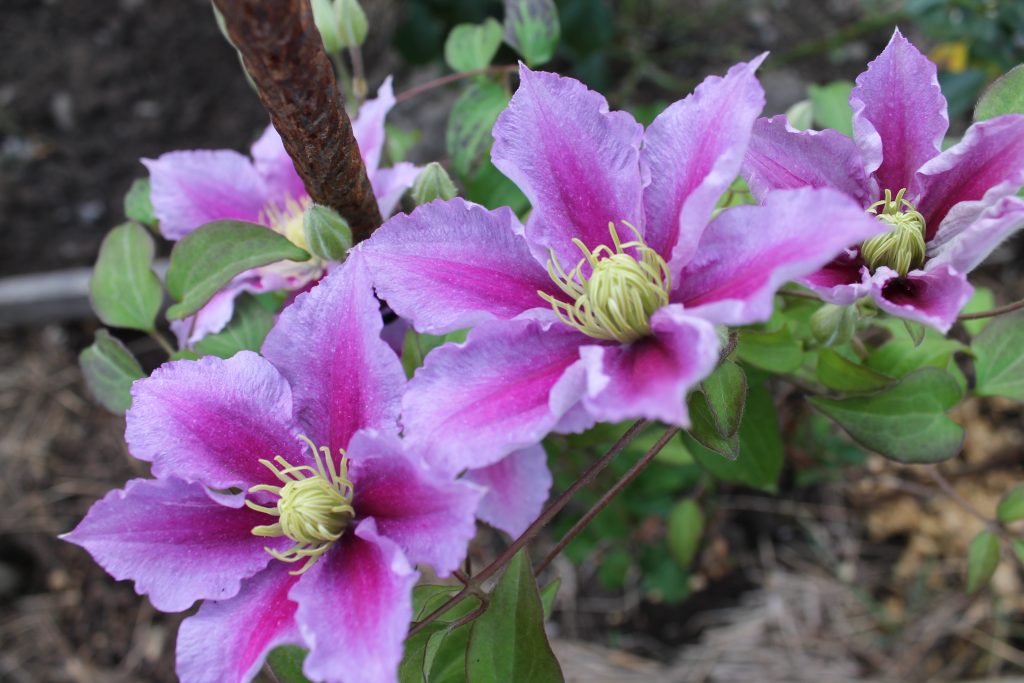
Clematis piilu photo
Description of the variety
The variety is compact, the shoots do not exceed 2 m in length, and in northern latitudes they grow only up to 90 cm. The flowers are medium-sized - 10-13 cm in diameter, pink-lilac in color with a dark pink stripe in the middle of each sepal. The anthers are long and bright yellow, slightly curled at the ends.
The flowering type of this hybrid is unusual. On the shoots of last year, preserved after winter, terry buds bloom. On young vines, simple, smooth flowers with regular petals can be seen.
Different buds bloom on one bush at the same time, which looks decorative and original.
Double flowers consist of 25 highly curled petals with a dark pink-lilac inner part. The stamens are almost invisible. A simple flower has 6-7 sepals, they are elongated, light purple, and the anthers are long and bright. The bush can bloom twice a season - in May-June and then in September. It all depends on the conditions and climate, care and age of the bush.
Landing features
Due to its compact size, Piilu Clematis can even be grown in a container. If you plan to keep it on the balcony, then you can plant it at any time of the year - in autumn or spring. In a warm room, it will survive both early autumn frosts and spring chills.
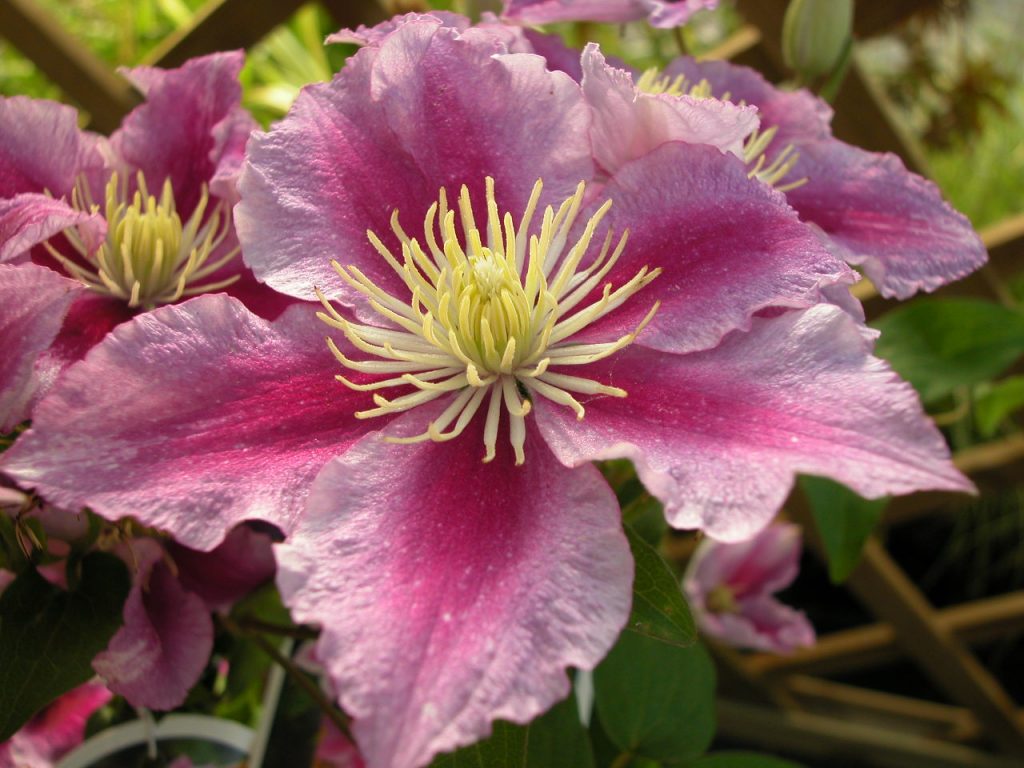
Clematis piilu reviews
In the open field, this plant dictates its own planting conditions. It is recommended to plant in the fall. Before real frosts, the seedling has time to take root, get used to the microclimate of the environment and enter a dormant period without problems. However, in the northern regions, it is better not to risk it and plant young clematis in the ground in the spring. Over the summer, it will harden without the risk of freezing, but it will begin to bloom a year later than with an autumn planting.
Seat selection
The Piilu variety is photophilous, the place for it should be well lit throughout the day. It is also important for the evaporation of moisture from the soil so that it does not stagnate at the roots. The flower is afraid of waterlogging, so it is advisable to choose a place for it on a hill. Lowlands and shady areas are not suitable for this hybrid.
The southern and southeastern sides of the garden, well warmed by the sun, without groundwater close to the surface, is an ideal place for planting. In other conditions, if clematis does not die, it will grow poorly, hurt, rarely and bloom for a short time. Only the right plots in the garden will be able to fully reveal the potential of this amazingly beautiful variety.
Preparation of planting material
This hybrid is most often sold in foreign online stores, then sent by mail in a special container. Such seedlings must be carefully inspected before planting in the ground. They themselves may be unhealthy, there is a risk of introducing infection or parasites into the garden and infecting other flowers.
A healthy seedling - green, fresh, without spots and seals on the leaves. Shoots should be clean, smooth, without traces of insects on the surface and in the axils of the leaves. Particular attention is paid to the roots when checking. When transported in a container, they often dry out and wither. In this case, the seedling is placed in water for 8-10 hours before planting.
If the roots of a young plant, on the contrary, are waterlogged, you will have to work with them before planting. First, remove all rotten roots without damaging the central one. Then the places of the cuts are sprinkled with crushed activated carbon and kept for 1-2 hours. Before placing in open ground, the roots and soil in the planting pit are sprayed with the fungicide Fitosporin-M.
Landing technology
A pit for each bush is prepared in advance, preferably a month in advance. If the planting is spring, then it is dug up in late autumn. The main stage is the organization of good drainage. This is important for the outflow of moisture from the roots of the plant so that they do not rot. Stones, expanded clay and large pieces of foam are lowered to the bottom of the pit. 2-3 plastic tubes are also installed there, so that later, when watering, the water nourishes the roots better.
After the drainage layer, there is a layer of nutrient soil. It is easy to buy it in the store, but then you still have to add a little bit. The soil should consist of:
- Leaf turf;
- Humus;
- Peat;
- Coarse sand;
- Compost.
The planting depth depends on the climatic zone in which the flower will grow.
- In the southern regions, the seedling is dug in by 12 cm.
- In the north, the root collar should not be too deep - a maximum of 5-7 cm.
Important! Many inexperienced gardeners are mistaken in believing that in cold latitudes it is more logical to plant a seedling deeper to protect against a harsh winter. In fact, frost is not so terrible for a plant as overheating in summer. In winter, with a good and properly organized shelter, clematis will not freeze, but the hot sun can harm its root system.
Care
The Piilu hybrid is considered demanding to care for. However, the result is worth it - the lush flowering of clematis twice a year will not keep you waiting. Large double buds will become an adornment of any garden, if you learn and fulfill certain requirements.
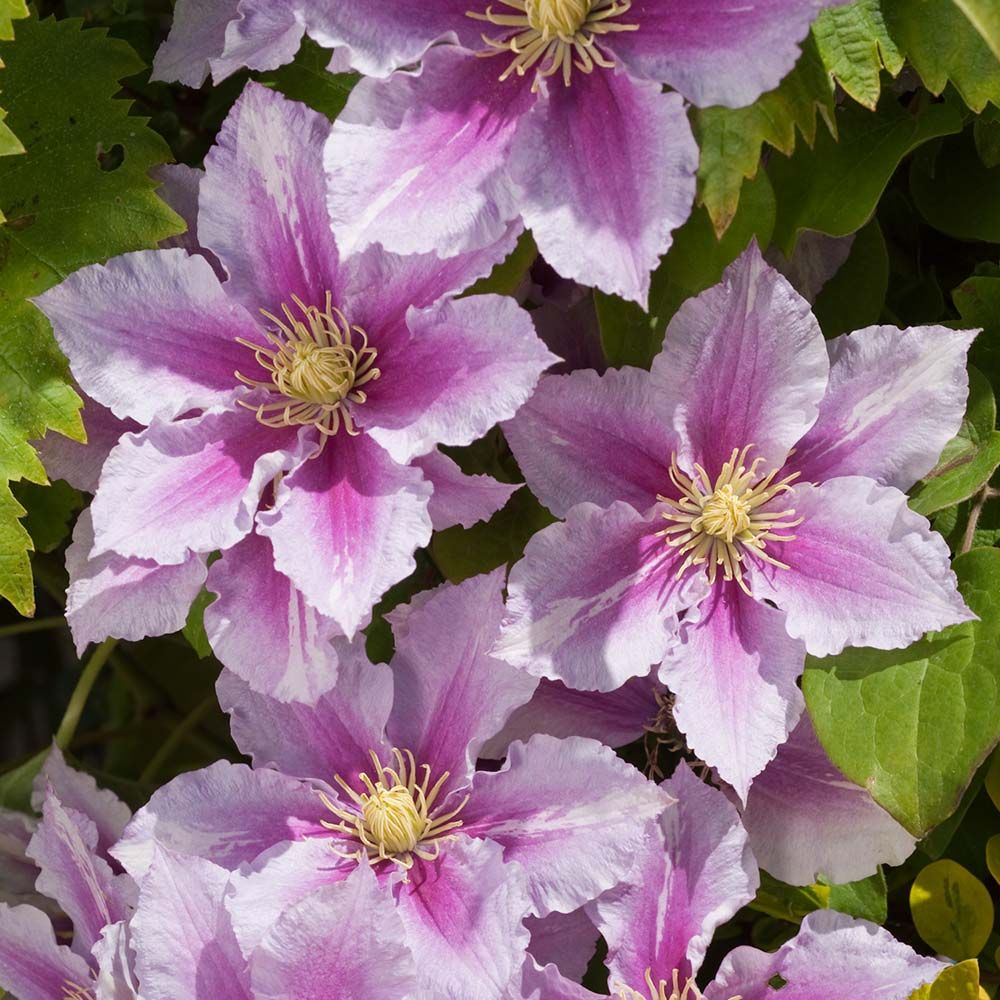
Clematis piilu description
Watering
Water should be plentiful, especially in summer. However, this is possible only with well-organized drainage, otherwise the roots will quickly rot. The water should be taken from the settled, preferably rainwater.
5-7 liters of water are poured under a first-year seedling every 4-5 days, under an adult bush - at least 20 liters.
In the heat, the procedure is carried out more often, every 2-3 days, so that the roots do not dry out.
From a lack of moisture, the plant can shed flowers and no longer bloom this year.
Top dressing
The Piilu variety is picky about feeding, it needs a lot of nutrients for lush flowering.
Scheme:
- Early spring. Mineral complexes with a high nitrogen content are introduced - ammonium sulfate or carbonate, ammofoska, sodium, ammonium, potassium nitrate, urea (carbamide).
- May-June, during the laying of buds, Clematis is fed with phosphorus-potassium complexes for decorative flowering plants.
- August-September, after flowering. Organic matter is introduced - rotted mullein or bird droppings. Minimize the amount of nitrogen to prepare the plant for winter.
Throughout the year, it is necessary to fertilize clematis with folk remedies. For example, herbal infusions are good for feeding flowering bushes. This is the same compost, only "instant". It takes only 1-1.5 months to bring it to full readiness.
In a large plastic or wooden barrel, you need to cut various herbs (nettles are very rich in useful substances) and pour water to the brim.To speed up the process, add 1-2 tablespoons of urea. After 3-4 weeks, the sourdough is used for watering garden plants. Fermented grass is sometimes spread around the bush as mulch.
Mulching and loosening the soil
All clematis have superficial roots, they need oxygen for normal development. Therefore, the ground under them needs to be loosened after each watering, even after rain.
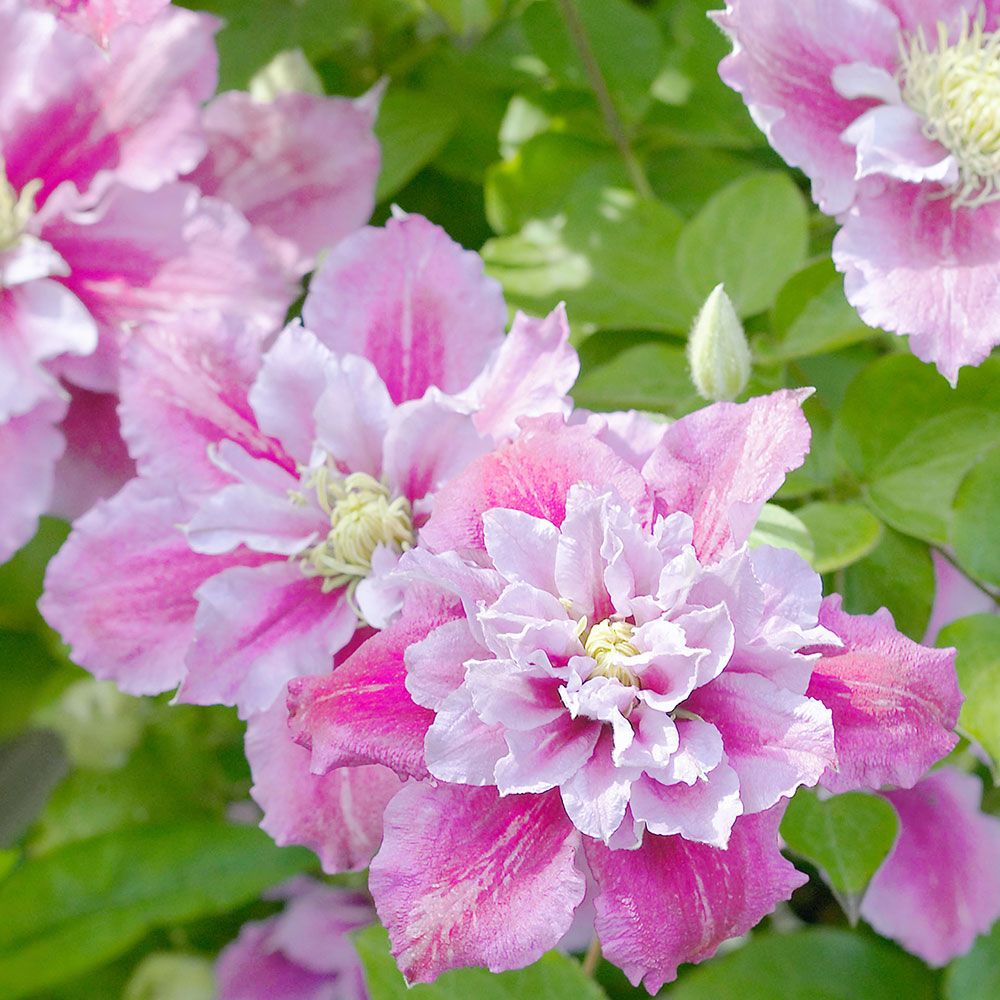
Clematis piilu planting and care
Mulching is also an important procedure. Mulch makes the topsoil loose, porous and airy. It protects the roots from overheating and maintains a normal moisture level, and also prevents the roots from freezing.
Hay, chopped pieces of wood, non-coniferous sawdust are used as mulch. Clematis respond very well to spreading over the soil under a bush of tea leaves or coffee grounds. This is mulching and feeding at the same time.
Pruning
The Piilu hybrid belongs to the II pruning group. The process takes place in two stages:
- In the summer, shoots with wilted flowers are removed. If there were too many buds, the vine is cut to the ground.
- In late autumn, all young shoots are cut to 3-4 buds, 10-15 cm from the ground.
The degree of pruning depends on the age of the bush and how early flowering is required. In order for clematis to bloom earlier, only flowering stem fragments must be removed. If we are talking about a more luxuriant, but late flowering, it is necessary to carry out a moderate or even full haircut.
Preparing for winter
It is important to exclude mineral complexes so as not to provoke the growth of the bush at a time when it already needs to rest.
Shelter is required even in warm regions.
Before the first real frosts, the bush is cut and covered. First, all the leaves are removed, then dry coniferous spruce branches are laid out under the bush and the plant is laid on it. Sprinkle with dry leaves on top.
Clematis is covered with a non-woven material and wrapped in a film. For reliability, put a sheet of slate on top. Sometimes boards are used, but they become too heavy when wet. After wintering, it is important to remove this entire structure in time so that the plant does not rot.
Reproduction
Clematis Piilu is an artificially bred hybrid. It is easy to propagate in any way, but not in all cases it will retain varietal properties.
The seed method does not make sense, it is better to resort to cuttings, propagation by layering or dividing the bush.
Cuttings
Cuttings are harvested in early spring, before bud break, cutting them from vines for 2-3 years. Each cutting should have 2-3 living buds. The planting material is placed in a solution of a root formation stimulator for several hours, and then placed in a substrate.
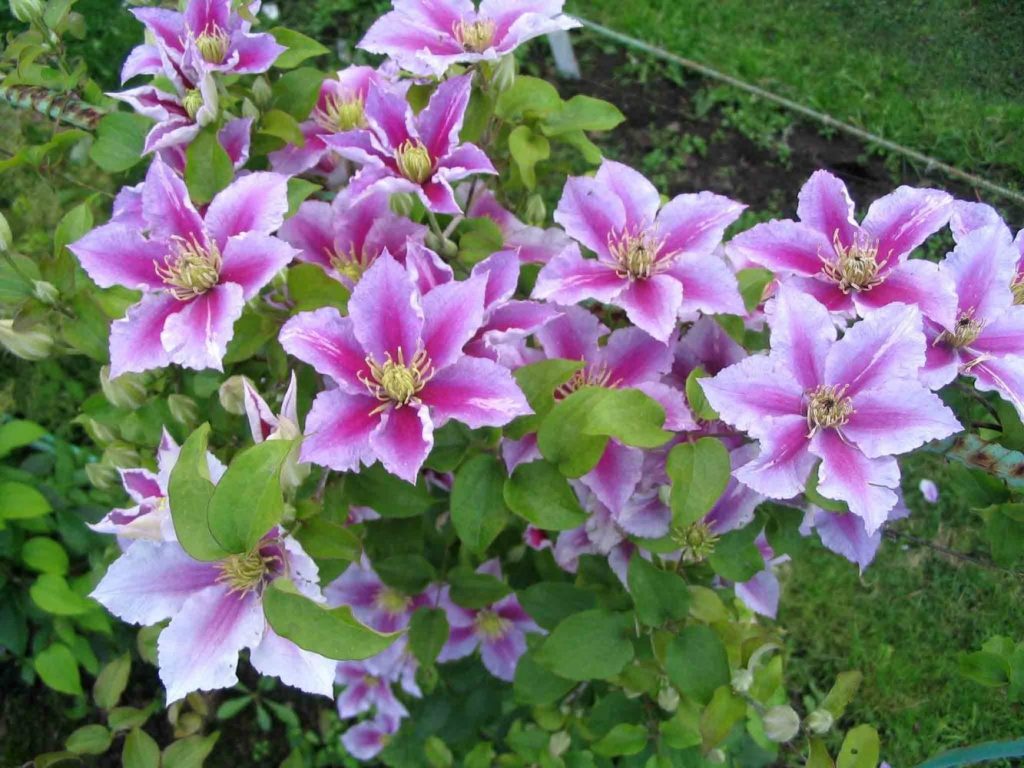
Clematis hybrid piilu
You can plant cuttings in flowerpots at home or place in a greenhouse on the site. The second option is preferable, the plant will immediately adapt to the conditions of the garden, and when transplanting it will be subjected to less stress.
The substrate should be as lightweight and breathable as possible. Approximate composition:
- Garden land;
- Perlite;
- Vermiculite;
- Peat;
- Coarse sand.
The cuttings are placed in the ground at an angle of 45%, so more roots will form. At a temperature of + 25-27 ° C, rooting is the fastest - in 2-3 weeks. At first, it is better to light up the seedlings so that they actively grow.
Layers
This method is suitable for dividing an adult bush - 5 years old and older. The extreme vines are bent to the ground and placed in the dug grooves so that the top sticks out. The dug-in place is abundantly watered with Kornevin's solution. Under favorable conditions, the first roots on the vine will appear in 3-4 weeks.
It is allowed to separate the rooted cuttings in the fall, planting it in a permanent place. However, it is best to leave it intact until spring. The mother shrub will nourish the cuttings in late fall and winter, helping to cope with the harsh times. Since spring, when young shoots wake up, they are separated and planted in pre-designated places.
Dividing the bush
This method provides guaranteed preservation of varietal properties by the plant. However, it is quite laborious and requires experience. In the fall, the bush is dug out completely, then the roots are divided with a sharp knife. The old, main root is placed in its original place, and the young shoots are planted separately.
Places of cuts on the roots must be treated with a solution of potassium permanganate or Bordeaux liquid so that the fungus does not develop. You can soak the roots in them for 30-40 minutes. When planting, it is important to maintain a distance between the bushes of at least 1 meter. Otherwise, the plantings will be too thickened, clematis will not bloom.
Diseases and pests
The main reasons for the decrease in the immunity of clematis are overflow, lack of nutrients, improper pruning and transplanting, freezing in winter.
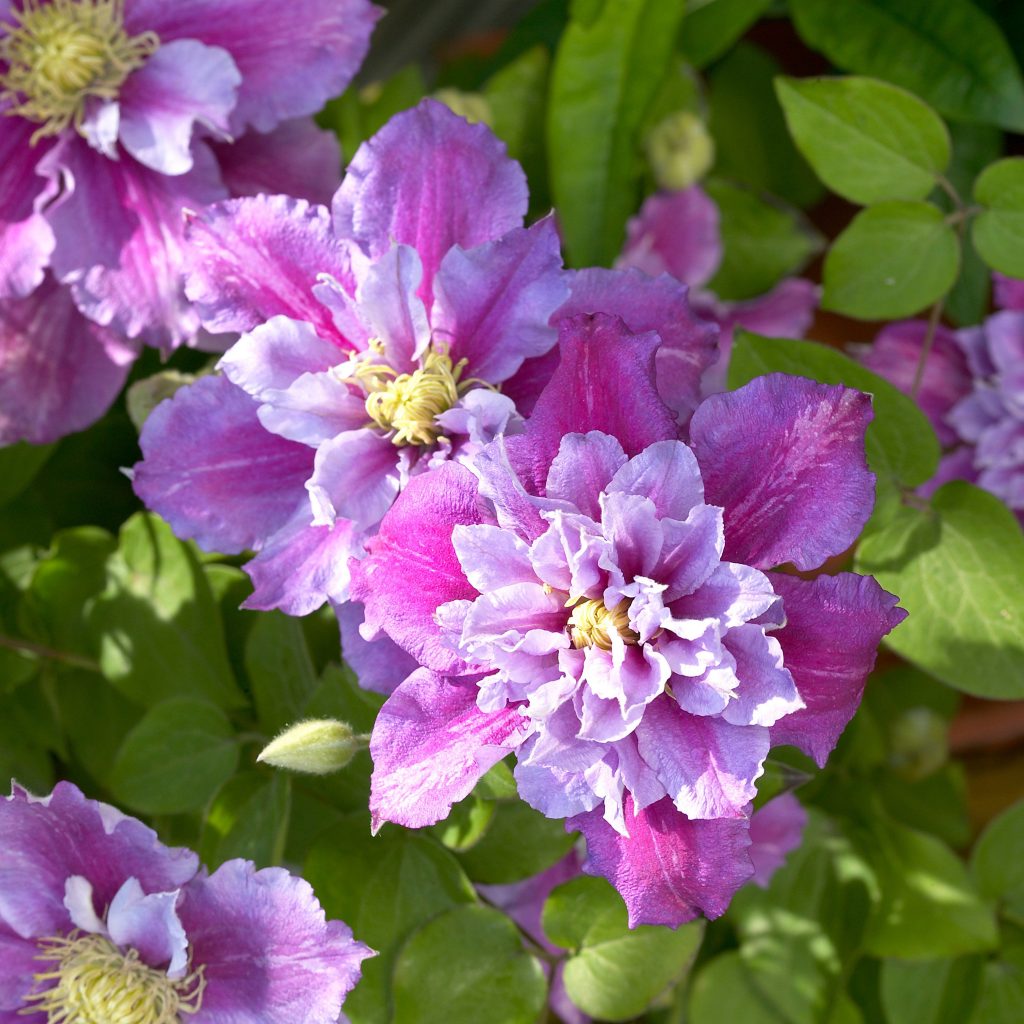
Clematis piilu
The most common diseases and treatments:
- Powdery mildew. Immediately carry out the treatment with fungicides - Topaz, Acrobat, Skor.
- Gray and black rot Effective fungicides - Alirin-B, Gamair, Discor.
- Withering (fusarium). Fungal disease is treated with Fundazol, Epin, Phytocide.
- Rust. Burn the affected leaves and shoots, treat the plant with 1% copper sulfate, Cuproxat (copper sulfate).
- Brown spot. Treat the bush with copper preparations - Benlat, Tsineb, 3% copper sulfate.
Of the pests, clematis are attacked by:
- Aphid. Wash off with a solution of digester soap, spray with Biotlin.
- Medvedka. Effective drugs: Medvetox, Thunder, Zolon, Grizzly.
- Caterpillars. Collect by hand. Treat the bush with lepidocide, bitoxibacillin, dendrobacillin.
- May beetle larvae. Do not tolerate excess nitrogen in the soil. Fertilize the bush with nitrogen-containing complexes regularly in the spring.
- Slugs. Spread cabbage leaves under the bush, pick by hand in the morning. Sprinkle the soil around the bush with crushed eggshells.
Use in landscape design
The variety is very compact, which allows it to be used as a decoration in any part of the garden. If desired, it is easy to move it to another place. Clematis Piilu looks good in combination with other plants, especially roses.
Bushes are planted as a hedge, placed around the perimeter of flower beds, sometimes as part of alpine hills. The hybrid is not very suitable for decorating arches - it is too short. But it grows beautifully along the walls and porch.
Variety reviews
Gardeners speak positively of clematis, even though it is capricious in care, often freezes in winter and does not retain varietal properties when propagated by seeds. It is grown even in the northern regions, where, although it freezes slightly, it still sprouts new shoots every year and blooms profusely.
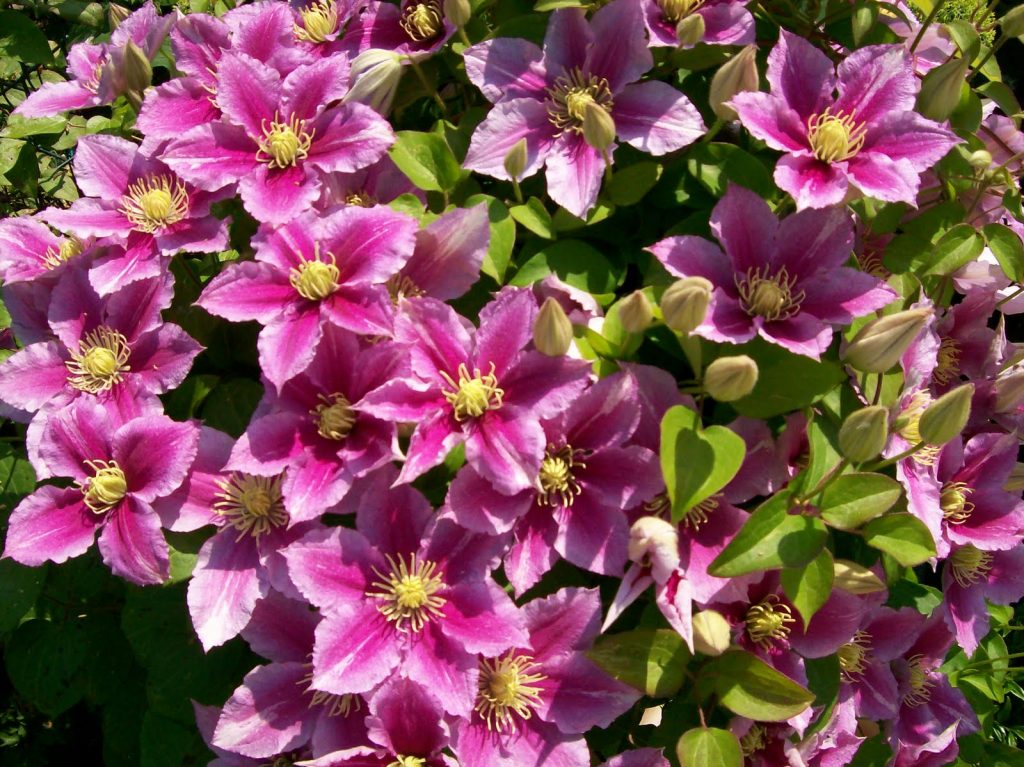
Clematis piilu reviews
The hybrid is beautiful. There are so many flowers on the bush that the greenery is almost completely invisible. The bushes are compact, which allows them to grow in containers in any part of the house or on the balcony.
The Piilu variety can start blooming as early as the second year, it is a real decoration of any space. Lush bloom twice a year, unusual double flowers, a long life of the bush - all this will be a reward for a gardener who decides to have this hybrid at home.

